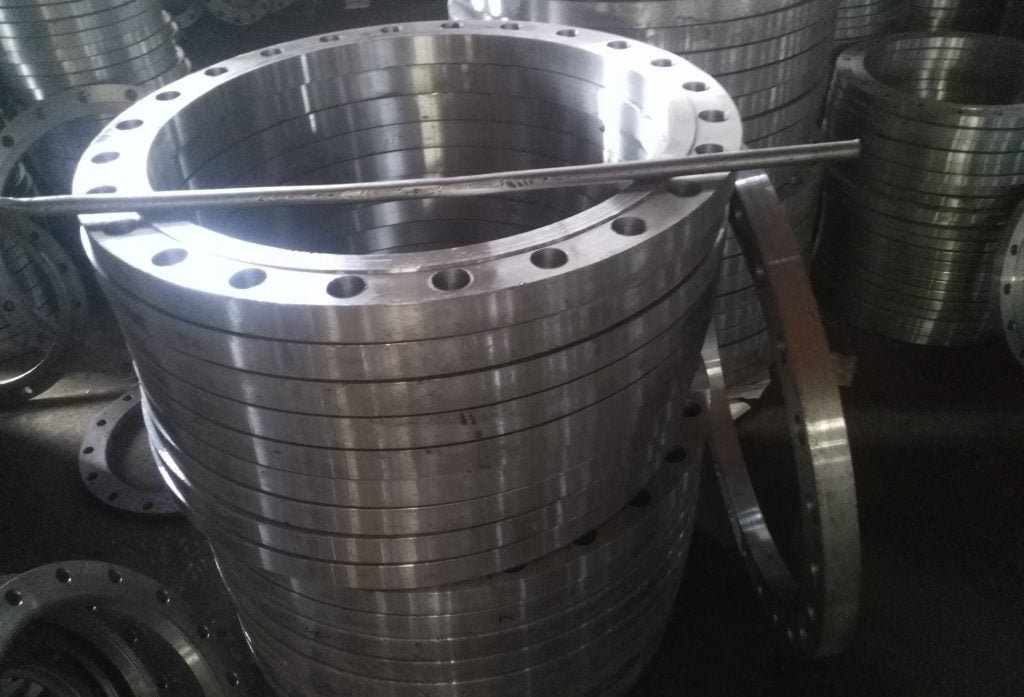How to choose the correct pipe flange size?
I. Introduction
Pipe flanges are essential components in various piping systems that are used to connect pipes, valves, and other equipment. Choosing the correct pipe flange size is crucial for ensuring that the piping system operates safely and efficiently. However, selecting the right size can be a challenging task, especially for those who lack experience or knowledge in this area. Choosing the wrong flange size can result in leakages, system failure, safety hazards, and increased repair costs. In this blog post, we will discuss how to choose the correct pipe flange size and avoid these challenges and consequences.

II. Understanding Flange Dimensions and Standards
Flange dimensions and standards are critical in selecting the correct pipe flange size. Here are some key points to know:
Flange dimensions are standardized measurements for flanges that ensure compatibility with different piping components. Common flange dimensions include outside diameter, bolt circle diameter, bore diameter, and thickness.
Several standards organizations provide guidelines for flange dimensions and designs, including:
- ASME (American Society of Mechanical Engineers)
- DIN (Deutsches Institut für Normung, German Institute for Standardization)
- JIS (Japanese Industrial Standards)
- BS (British Standards)
Each standard has its unique set of dimensions and criteria for selecting the right flange size. For instance, the ASME B16.5 standard defines flanges for pressure-temperature ratings, while the DIN standard focuses on flange facing, gasket type, and bolt-hole pattern.
Common types of flanges include:
- Weld Neck Flanges: Connects pipe by welding the neck to the pipe and bolting the flange to the equipment.
- Slip-On Flanges: Slips over the end of a pipe and is then welded in place.
- Blind Flanges: Used to seal off the end of a piping system or vessel opening.
- Threaded Flanges: Can be screwed onto pipes that have external threads.
- Socket Weld Flanges: Connects pipe by welding the pipe end into the socket of the flange.
Each flange type has its unique features, such as different thicknesses, facing types, and connection methods. Choosing the correct flange type is crucial in selecting the right flange size.
III. Factors to Consider When Selecting Flange Size
When selecting the correct pipe flange size, several critical factors need to be considered to ensure system safety and performance. Here are some key factors to consider:
- Pressure rating: The flange size must match the pressure rating of the piping system. Choosing a flange size with a lower pressure rating can lead to system failure while selecting a flange with a higher pressure rating can result in unnecessary costs.
- Pipe size and wall thickness: The flange size must match the diameter of the pipe and the wall thickness. A flange that is too large or too small will not connect correctly, leading to system leaks and potential safety hazards.
- Flange-facing and gasket type: The type of flange-facing and gasket must be compatible with the flange and piping system. Improper facing and gasket selection can lead to system leakage and failure.
- Temperature and medium properties: The temperature and type of fluid or gas that the piping system will transport must be considered when selecting the correct flange size. Different materials have varying temperatures and chemical resistance properties, and selecting the wrong flange size can lead to corrosion, contamination, and other problems.
- Installation requirements: The method of pipe installation and the equipment that will be connected to the flange must be considered when selecting the correct flange size. Choosing a flange that does not match the installation requirements can lead to leaks, system failure, and additional repair costs.
- Standard regulations: Various regulatory standards may dictate the minimum requirements for flanges in different applications. It is important to ensure that the selected flange size complies with these guidelines and regulations.
Considering all of these factors is essential when selecting the correct pipe flange size. Consulting with a qualified professional is recommended to ensure that the correct flange size is chosen for a particular application.
IV. Methods for Calculating Flange Size
When selecting the correct pipe flange size, it is essential to know how to make accurate flange size calculations. Here are some methods for calculating flange size:
- Basic calculations: The most straightforward method for calculating flange size is through simple calculations. This involves knowing the inside diameter (ID) and outside diameter (OD) of the pipe, and the dimension of the flange you need to fit the specific piping system.
- Advanced calculations and tools: For more complex piping systems or applications involving high-pressure fluids or gases, advanced calculations and tools such as Finite Element Analysis (FEA) and Computational Fluid Dynamics (CFD) can be used. These tools can predict fluid flow, stress distribution, and other critical factors to help determine the correct flange size.
FEA calculates the structural strength of flanges and other piping components by simulating various loads and stress conditions. This method helps ensure that flanges are not subjected to loads exceeding their strength capacity.
CFD, on the other hand, can help predict fluid flow patterns and velocity distribution, which can influence the selection of the correct flange size. This method can help identify the correct flange size for specific flow rates and pipe sizes.
While basic calculations may be sufficient for simple piping systems, advanced methods such as FEA and CFD can provide more precise results, which are useful for complex and high-pressure applications. Consulting with a qualified professional is recommended when selecting the correct flange size, especially for more complex systems.
V. Common Mistakes to Avoid
When selecting the correct pipe flange size, there are common mistakes that should be avoided to ensure system safety and performance. Here are some common mistakes to avoid:
- Inaccurate measurements: Taking inaccurate measurements of pipe dimensions can lead to selecting the wrong flange size. It is essential to take precise and accurate measurements to ensure the correct flange size is selected.
- Ignoring critical factors: Ignoring critical factors such as pressure rating, temperature, and fluid properties can lead to selecting the wrong flange size. It is essential to consider all critical factors to ensure that the flange size matches the piping system’s needs.
- Overlooking compatibility issues: Ignoring compatibility issues such as flange facing and gasket type can lead to system leakage and failure. The flange must be compatible with piping components, or else it can lead to problems and safety hazards.
- Neglecting safety concerns: Neglecting safety concerns can lead to accidents, damage, and costly repairs. It is essential to take safety precautions seriously and select the correct flange size that meets all safety standards and regulations.
To avoid these common mistakes, it’s important to consult with a qualified professional who has experience in selecting the correct flange size. They can provide expert advice and offer design solutions that can help ensure system safety and performance.
VI. Conclusion and Recommendations
In summary, selecting the correct pipe flange size is essential for ensuring system safety and performance. Key factors to consider when selecting the flange size include pressure rating, pipe size and wall thickness, flange-facing and gasket type, temperature and medium properties, installation requirements, and standard regulations.
Recommendations for selecting the correct flange size include taking accurate measurements, considering critical factors, ensuring compatibility, and prioritizing safety concerns. It is also essential to seek professional expertise from qualified professionals with experience in selecting flange sizes for different applications.
Certainly, as a professional China flange manufacturer, YANHAO can provide customers with various types of standard and non-standard flange products. We have a team of professionals and advanced production equipment, enabling us to provide tailored solutions for our customers. If customers need to select the correct flange size and avoid the associated safety risks or system failure risks, please feel free to contact us. We will provide you with professional assistance and advice to ensure that your system achieves optimal performance.
Author: Lewis Liu
Hello, my name is Lewis Liu, and I’m a professional sales engineer with over a decade of expertise in the flange fittings sector.
I am quite informed about flange selection, installation, and maintenance. I am passionate about providing customers with the greatest solutions for keeping their pipeline systems running smoothly, safely, and dependably.
If you have any queries or concerns concerning flange fittings for your pipelines, whether they are about selection, material choice, specification requirements, or anything else, please contact me at any time. I am dedicated to providing expert advice and assistance to help you make educated decisions and reach your objectives.

